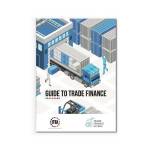Trade Finance Solutions

This content was produced in conjunction with ITFA.
Access trade, receivables and supply chain finance
We assist companies to access trade and receivables finance through our relationships with 270+ banks, funds and alternative finance houses.
Get StartedContents
There are many ways in which a company can finance a trade using trade finance. People often use terms such as stock finance, borrowing base finance or purchase order finance. The main trade finance solution that is usually used and readily available in the market is ‘purchase order’ type trade finance. This is the standard facility when looking at a trading company – either domestically or internationally.
Purchase order finance is most common when there is a purchase order raised by a buyer and the commitment to fund the corresponding seller by a lender. This can be done in various ways – it could be based on a letter of credit payment terms, deposit for goods and later payment, payment following credit terms provided by the supplier or cash against documents.
Another well-known trade finance solution is invoice finance. Whilst not technically trade finance, invoices are used to reduce the overall cost of funding to the borrower. The cost of invoice finance is usually lower than trade finance. Thus, an invoice is raised when goods are sent to an end customer and funds are usually advanced against this. Invoice financiers will typically fund between 75-90% of the invoice value and in the event that a trade line is used, then invoice finance will usually be used to pay it back.
Trade finance versus stock finance, what’s the difference?
Trade finance is sometimes confused with stock finance but they are different. Stock finance is most common when there is the requirement to hold stock short term prior to sale; thus there will not necessarily be a purchase order from an end customer. There is a desire to hold stock and a buffer may be needed due to seasonality or random fluctuations. A good example of this may be an online retailer who in the run up to Christmas may require buffer stock in order to serve large or unplanned for orders. The payment terms from a supplier are similar – it could be cash against documents, against LC or split payment with a deposit mechanism. However, instead of product going straight to the end buyer – it will sit in a warehouse.
Stock finance is more likely to be used where there are individual consumer purchasers as there cannot be an invoicing mechanism used – which is usually used in trade. The reason for this is that invoice financiers will not fund invoices to consumers. Usually in an online retail business structure, there are no pre sold products. Thus, there cannot be purchase order or typical a trade finance structure.
Moving stock facility?
A borrowing base or moving stock facility is where finance is usually advanced against stock owned by the company. This is where there is equity or ownership of stock by a company and a funder will come in and release a level of funding against that stock. This will be based on periodic examinations of those levels e.g. monthly.
It is important to look at the many trade finance solutions that are available along with the business need and sector. We do this and work together with you to try and create the most suitable solution.
Our trade finance partners
- Trade Finance Resources
- All Trade Finance Topics
- Podcasts
- Videos
- Conferences
- Products we finance




















